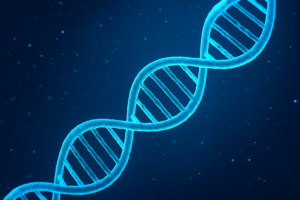 We’re All the Same… Right?
We’re All the Same… Right?
At a genetic level, every human being on the planet is astonishingly similar. According to the Human Genome Project, we share 99.9% of the same DNA. Whether you’re from New York or Nairobi, your genetic blueprint is nearly identical to anyone else’s.
But wait — if our DNA is virtually identical, why are we all so different?
From your eye color, height, personality, and disease resistance, the real magic lies in the remaining 0.1% of our DNA. And that tiny slice is what makes you unique.
Tiny Differences, Massive Impact
That 0.1% may sound small, but it’s made up of millions of variations in the DNA code. Single Nucleotide Polymorphisms (SNPs) are called “snips.” Think of SNPs as spelling changes in your genetic recipe.
For example, one person’s DNA might say A-T-C-G, while another might say A-T-T-G at the same location. These tiny edits affect how proteins are built in your body, and in turn, they influence traits like:
- Hair and eye color
- Food preferences
- Immune responses
- Susceptibility to certain diseases
- Even how you process medications
So yes, even the tiniest change can mean the difference between blue eyes and green or between lactose tolerance and lactose intolerance.
More Than Just Genes: The Role of Epigenetics
But genes aren’t the whole story. Scientists have discovered that your environment and lifestyle can change your genes’ behavior without altering the underlying DNA.
This fascinating field is called epigenetics.
Stress, diet, pollution, and sleep habits can cause chemical changes that “turn on” or “turn off” specific genes. These changes can even be passed down to your children — meaning your lifestyle could influence the biology of future generations.
So, while your DNA sets the blueprint, your environment helps decide which rooms get built.
What About Mutations?
Mutations are permanent changes in your DNA. Some are inherited from your parents, while others happen randomly. Most gene mutations are harmless, but some can lead to genetic disorders or increase your risk of diseases like cancer.
Interestingly, some mutations can also provide benefits. For example, a mutation that helps people live at high altitudes without difficulty is common among Tibetans. These adaptations are part of how human diversity evolved across the planet.
Why This Tiny Difference Matters
Understanding that humans are nearly identical at the DNA level yet incredibly diverse in traits has significant implications:
- Personalized medicine: Doctors can tailor treatments based on your specific DNA profile.
- Genetic ancestry: DNA tests can trace your lineage across continents and generations.
- Forensics: Law enforcement uses DNA to match identities with extremely high accuracy.
- Health forecasting: Some companies can predict disease risk based on your genes (though results vary in accuracy).
As we uncover more about human genetics, we learn that our uniqueness is deeper and more connected than we ever imagined.
Final Thought: The You in You
You result from billions of years of evolution, shaped by genetics, environment, chance, and time. While you may share 99.9% of your DNA with the person standing next to you, the extraordinary 0.1% tells your unique story.
So next time someone says, “We’re all the same,” remember:
Yes, we are — but in beautifully different ways.